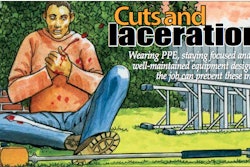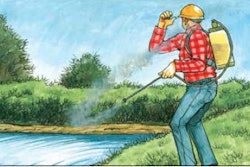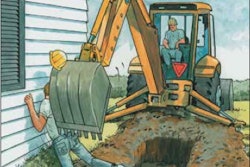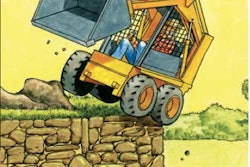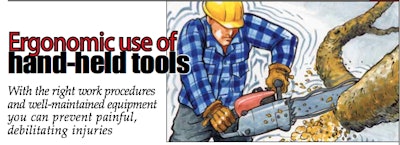
The bottom line: Preventing HAVS and other ergonomics-related injuries associated with handheld tools is possible through proper work procedures, use of personal protective equipment and tool maintenance. To avoid HAVS, operate power tools at the lowest speed necessary (for example, a chain saw operating at two-thirds throttle produces less vibration than one operating at full throttle); wear anti-vibration gloves; alternate use of vibrating tools with work tasks that don’t involve vibration; take frequent breaks; maintain tools so they perform optimally (a clogged air filter, poorly tuned engine, dull saw chain or blades, etc. will increase vibration).
Proper maintenance is the front-line defense against many ergonomics-related injuries, says Gail Tunis, garden maintenance manager at Borst Landscaping & Design, headquartered in Allendale, New Jersey. “It’s true that oddly placed shrubs, bushes or unconventionally shaped lawns lead to crews manhandling machinery,” she says. “But even worse is using machines with dull blades, bad wheels or engines that are not well maintained. Fighting the lawn is a short-term problem; fighting the machine is an ongoing battle.”
Mark Borst, owner of Borst Landscaping & Design, recommends sharpening the blades of manual pruners, clippers and shears daily at the jobsite with a sharpening stone. Make certain you have the proper size file for sharpening your chain saw blade, and take it to the jobsite. Check and clean air filters weekly at a minimum; daily if necessary. “Not having well-maintained equipment fatigues the body,” Borst says. Proper maintenance allows you to complete tasks faster and without as much force, arm motion or muscle wear and tear.
Borst also cautions against abusing equipment by throwing it in a truck or transporting it on a trailer without tying it down. “Not only are you hurting the owner’s pocket, you’re hurting your body by making your job more difficult.”
If a machine is equipped with a shoulder strap, adjust it to fit you and wear it. Also hold each tool by its handles and in the manner recommended by the manufacturer. If you are unsure of the correct ergonomic positioning, ask your supervisor to show you the owner’s manual.
High hand force – defined as gripping with the force needed to pick up an object weighing 10 pounds or more – is necessary for a multitude of landscaping tasks including pruning, trimming and holding power tools. Performing this action more than four hours per day (or more than three hours per day when combined with awkward wrist angles or repetition) is hazardous. Alternate other tasks with this type of work or take rotating shifts with other workers.

